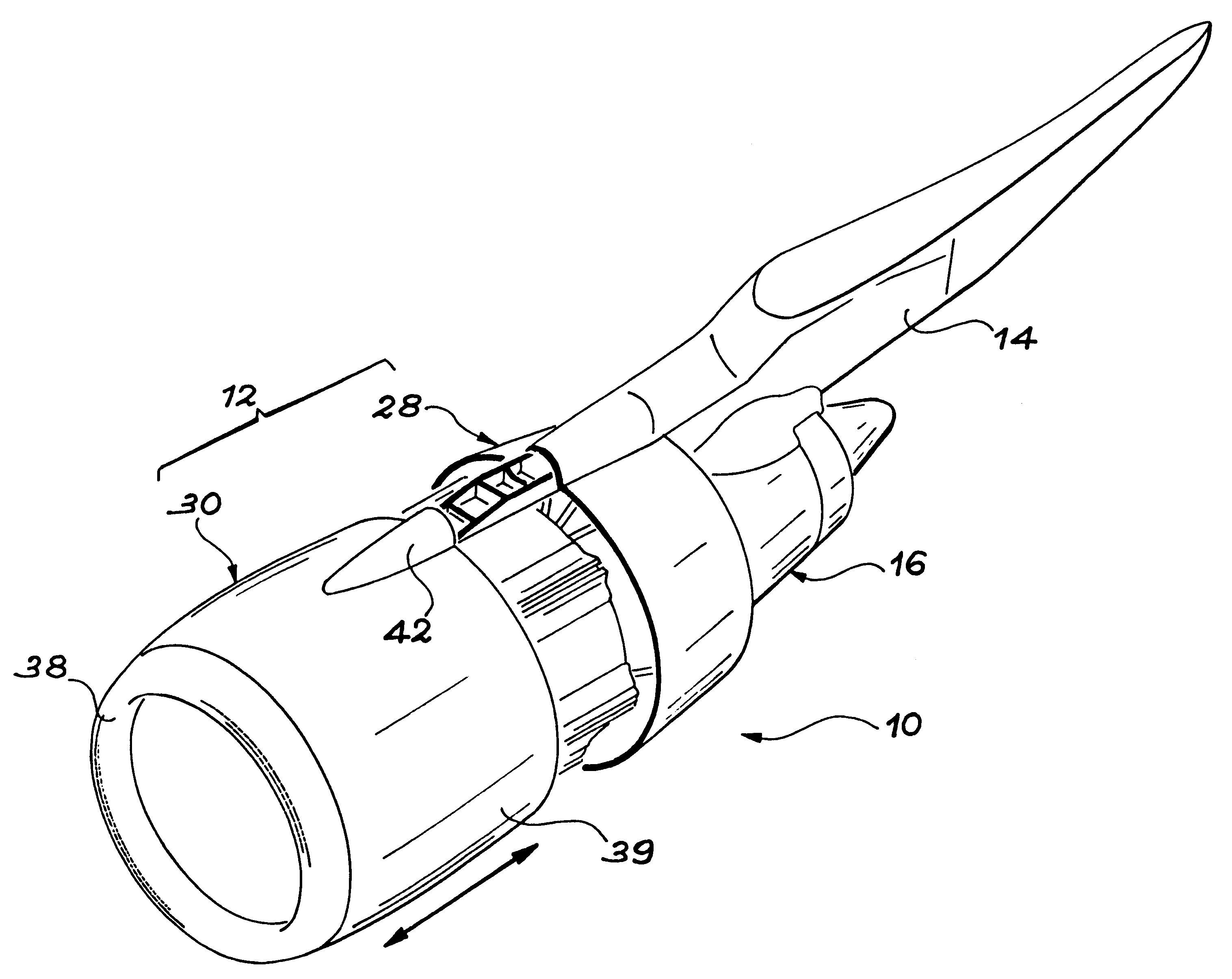Turbojet pod with laminar flow
a technology of laminar flow and turbojet, which is applied in the direction of aircraft power plant components, lighter-than-air aircraft, transportation and packaging, etc., can solve the problems of unfavorable use, unfavorable aerodynamic air flow along the outer surface of the bay, and unfavorable us
- Summary
- Abstract
- Description
- Claims
- Application Information
AI Technical Summary
Benefits of technology
Problems solved by technology
Method used
Image
Examples
Embodiment Construction
The invention relates to a jet engine bay, whose original architecture makes it possible to eliminate any discontinuity, at least over the front half of the external surface thereof, thus controlling both on the ground and in flight, the aerodynamic shape of said surface, so as to ensure there a laminar air flow, whilst rendering possible access to the region of the bay located around the jet engine fan.
According to the invention, this result is obtained by means of a jet engine bay, characterized in that it comprises:
a rear structural element,
a front structural element, integrating an air intake box and an external shell extending rearwards and without any discontinuity, an external surface of the air intake box, so that the front structural element has a continuous, external surface extending over at least 50% of the geometrical chord of the bay,
maintenance and guidance means, interposed between the front structural element and a jet engine fan case, so as to allow a limited slidi...
PUM
 Login to View More
Login to View More Abstract
Description
Claims
Application Information
 Login to View More
Login to View More - R&D
- Intellectual Property
- Life Sciences
- Materials
- Tech Scout
- Unparalleled Data Quality
- Higher Quality Content
- 60% Fewer Hallucinations
Browse by: Latest US Patents, China's latest patents, Technical Efficacy Thesaurus, Application Domain, Technology Topic, Popular Technical Reports.
© 2025 PatSnap. All rights reserved.Legal|Privacy policy|Modern Slavery Act Transparency Statement|Sitemap|About US| Contact US: help@patsnap.com



